We are now officially into production on our individual projects. Ten thirds years films and one second year film shot back to back over approximately forty days. It can be quite a slog to get to the end of it, it is quite tiring physically and mentally but I think we are a bit more prepared for it this time around. We have drawn up a schedule and had meetings on when each person will be shooting and who will be doing what on everybody's film. We've also said that we should schedule a few breaks as well so that we don't wear ourselves out or get too far behind on prepping for our own shoots. It's a very delicate logistal feat which doesn't leave much room for unexpected circumstances and general bad luck but we have to roll with it, those are the cards we are dealt.
Lee was first to shoot. On Sunday, the cast and crew went to dinner at Lee's place which was great - gave everyone a chance to mentally prepare ourselves and enjoy each other's company before our marathon of filming began. It's always a bit daunting being first up to film, so good on Lee for going first. There were a few issues which resulted in having to quickly change to another location, and change the shooting schedule. Lee was a bit stressed about that, but everyone rallied around and assured Lee that these are things that can happen on shoots, even the big professional ones, so not to worry too much and just roll with it.
I was the soundie on the shoot. I had a few of my own things to deal with as well. The Zaxcom mixer that I had planned to use had problems from the beginning - the card wouldn't format, and then I tried to reset it and it crashed so I couldn't turn it on. So I ended up switching to a Sony mixer instead (which I had never used before - in fact I didn't even know we had a Sony mixer in the equipment room!). It's a bit different from the Zaxcom in that it doesn't record seperately, so you have to plug in to the audio inputs on the camera. That can be a bit annoying as it limits your freedom to move around. Howevcr, it will save some time for us in post if we don't have to sync up sound. Also, the pre-amps seemed to be great, there's hardly any hiss when you increase the gain and levels.
I did have a bit of a problem on some of the days as I couldn't work out why the sound on the camera was recording so low when it was coming through loud and clear on the mixer. I looked at all the settings on the camera and changed a couple of things, and got it to change from limiting at -20 db to -10 db but for some reason I couldn't get it to go any higher. That was frustrating, but I managed to work around that mostly.
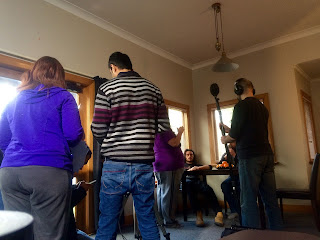 |
| Doing a sound check on 'Suspicion', Lee's film. |
Kim's shoot was right after Lee's. I was a soundie on that as well and really enjoyed it. We shot over three days mainly out as Seeward Bush, but we also shot at Lana's place and St Mary's Basilica (was good to see inside there - it's a really impressive building from the outside so I've always wondered what it's like inside). We got a mixture of different weather conditions over the three days, but since Kim is filming a trailer and not actually a full film, that shouldn't be so much of a problem in terms of continuity.
I think I have managed to get more used to the mixer now, the sound that I checked out has been good so far. There were a few planes and a bit of traffic at our Seeward Bush location but the directional mic seems to have done a decent job of minimising that.
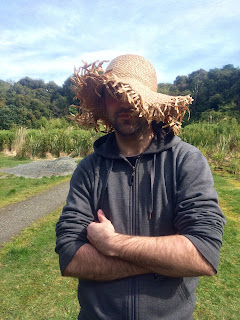 |
| Everyone had a turn with Cyrin's hat. |
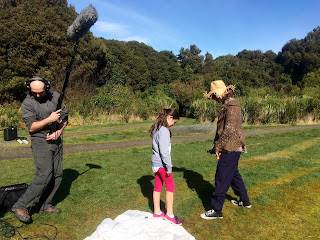 |
| Checking my levels. Or possibly my shoe... |
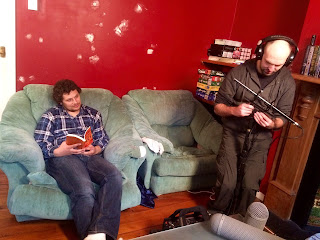 |
| Setting up my directional mic |
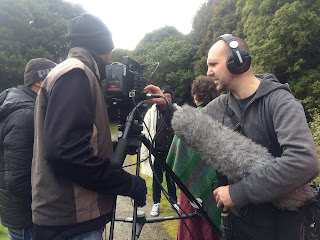 |
| Getting my Sony mixer tethered to the camera |
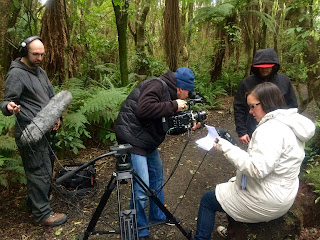 |
| On the set of 'Ko's World' |
In other news: I have now booked flights for my DOP, Adam Joseph Brown, to travel down from Napier. I was hoping to tie in travel with cast/crew coming in from other parts of the country as well to make it all a bit cheaper, but that was going to be a logistical nightmare in terms of timing flights, buses and having stopover accommodation. I came to the conclusion that it wasn't going to save a huge amount of money and it would end up being more trouble and more risky than it's worth. Also, it wouldn't have made economical sense for Adam as it would have meant taking more time off work to spend an extra few days traveling here. In the end, it was best just to get the flight down here - better to strike while the iron is hot and we could still get relatively cheap flights instead of waiting for the stars to align (the film stars in this case. Badum-tish).
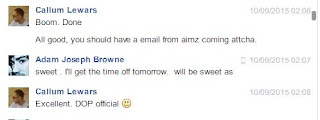
I've worked with Adam on many different shoots and he is an excellent DOP so I'm really looking forward to having him on board for my film. I had the pleasure of co-editing his film 'Still is the Night' last year and really enjoyed the collaboration.
P.S. I've added some updates to my last blog post.
P.P.S. Thanks to Iris for the pics on set otherwise I wouldn't have any to add to my blog! Being a soundie means phones are off, so good to have someone around who can grab some BTS stills in quiet moments.










